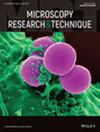Amino acid surface modified bioglass: A candidate biomaterial for bone tissue engineering1
Abstract
Bioglasses are solid materials consisted of sodium oxide, calcium oxide, silicon dioxide and phosphorus in various proportions and have used in bone tissue engineering. There have been ongoing efforts to improve the surface properties of bioglasses to increase biocompatibility and performance. The aim of the present study is to modify the bioglass surface with an amino acid mixture consisting of arginine, aspartic acid, phenylalanine, cysteine, histidine and lysine, to characterize the surface, and to evaluate the performance and biocompatibility in vitro and in vivo. The untreated bioglass, bioglass kept in simulated body fluid (SBF), and modified bioglass were used in further evaluation. After confirmation of the surface modification with FT-IR analyses and SEM analyses, MC3T3-E1 preosteoblasts adhesion on the surface was also revealed by SEM. The modified bioglass had significantly higher ALP activity in colorimetric measurement, rate of calcium accumulations in Alizarin red s staining, lower rate of cell death in Annexin-V/PI staining to determine apoptosis and necrosis. Having higher cell viability rate in MTT test and absence of genotoxicity in micronucleus test (OECD 487), the modified bioglass was further confirmed for biocompatibility in vitro. The results of the rat tibial defect model revealed that the all bioglass treatments had a significantly better bone healing score compared to the untreated negative control. However, the modified bioglass exhibited significantly better bone healing efforts especially during the first and the second months compared to the other bioglass treatment treatments. As a result, the amino acid surface modification of bioglasses improves the surface biocompatibility and osteogenic performance that makes the amino acid modified bioglass a better candidate for bone tissue engineering.
Research Highlights
- Bioglass surface modification with amino acids contributes to bioglass-tissue interaction with an improved cell attachment.
- Modified bioglass increases in vitro Alp activity and calcium accumulation, and also positively affects cell behavior by supporting cell adaptation.
- Bioglass exerts osteogenic potential in vivo especially during early bone healing.


 求助内容:
求助内容: 应助结果提醒方式:
应助结果提醒方式:


